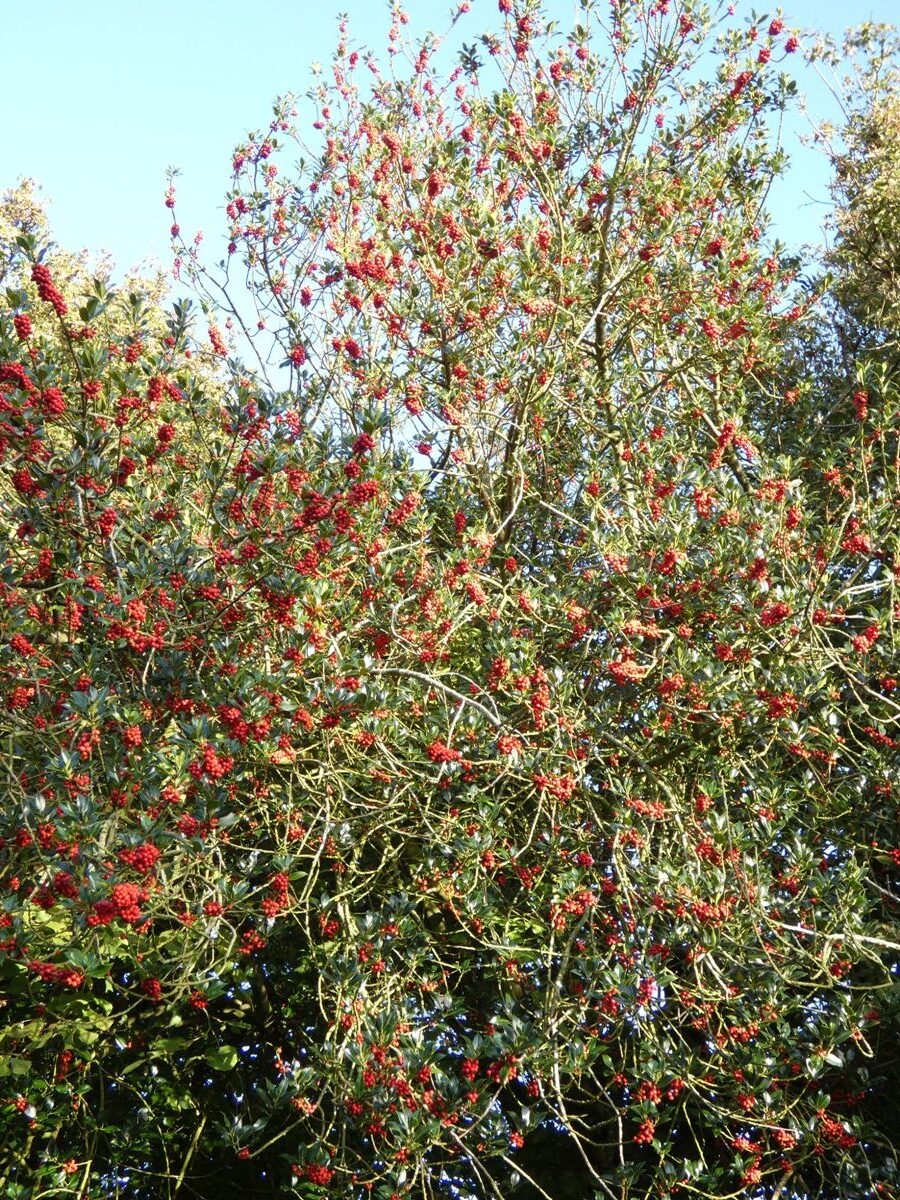Ilex aquifolium
Holly
Species Tolerances
- Drought Tolerance: Medium
- Shade Tolerance: Yes
- Waterlogging Tolerance: Low
- Frost Tolerance (trees from warmer climates may be frost tolerant, but their flowers may not be): Yes
- RHS Hardiness: H6
- Optimum Conditions for Growth:
An understorey tree in woodland. Will grow in all soils but prefer those that are well-drained and slightly acidic to neutral pH. Avoiding very wet and waterlogged sites, it grows well in urban and coastal sites tolerating exposure to wind and salt spray. Sensitive to drought and high summer temperatures (especially if isolated from other trees), and very heavy frost, so most often growing on the milder west coasts of British Isles. - Susceptibility to Pest/Disease:
No major pest or disease problems of note at present.

Ilex aquifolium/ Bee Happy Plants & Seeds
Service to Pollinators
- Summary of Service to Pollinators:
Secretes nectar freely in early summer, which is easily available to many bee species and other pollinators such as hoverflies and holly-blue butterfly. An important plant to pollinators if not clipped. - Nectar Value to Pollinators: 3 (of 0-3)
- Honeydew Value to Pollinators: 0 (of 0-3)
- Pollen Value to Bees: 2 (of 0-3)
- Flowering Period: May
Risks
- Human Toxicity: Toxic
- Livestock Toxicity: Non-toxic
- Invasive Risk: No
- Suckering: No
Products
- Edible Fruit: No
- Edible Leaves: No
- Edible Sap: No
- Edible Seeds: No
- Honey, major source in UK: Yes
- For any medicinal potential, see 'Further Details' below.
- Timber: Yes
- Livestock Fodder: Yes
- Other Products:
An excellent hedgerow tree as it can tolerate cutting. Its upper foliage is more palatable to livestock.
Utility
- Nitrogen Fixation: No
- Organic Matter Accumulation: Yes
- Phytoremediation: Insufficient Data
- Deacidification: Insufficient Data
- Windbreak: Yes
- Soil Erosion Control: Yes
- Shade or Shelter: Yes
- Plant Support: Insufficient Data
- Integrated Pest Management: Insufficient Data
- Wildlife Value: Yes
- Wildlife Value Summary:
Good for biodiversity and berries for food on female plants, for a large range of birds and mammals. - Graduated Nativeness Classification ⓘ: 1 (of 1-10)1. Historic Native
2. Historic Introduction
9. Neutral Introduction
Further Details
Evergreen suitable for dense livestock-proof hedging.